![]()
![]()
![]()
Use LEFT and RIGHT arrow keys to navigate between flashcards;
Use UP and DOWN arrow keys to flip the card;
H to show hint;
A reads text to speech;
10 Cards in this Set
- Front
- Back
- 3rd side (hint)
|
Popular Sovereignty |
The people rule we govern ourselves started small but grew as history went on.D important because people allow the government to rule peaceful overthrow. |
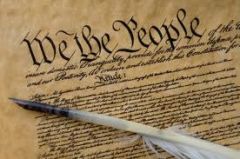
|
|
|
Republicanism |
Wanted people to have a voice but not have popular opinion get in the way of smart decisions.vote for our political representatives avoid mod mentality educated people that we trust having a voice in these issues. |
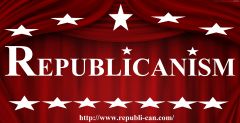
|
|
|
Federalism |
National and state governments share powers delegated powers reserved power concurrent powers King George effect fears of too much government powers. |
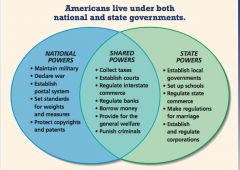
|
|
|
Seperation of Powers |
Separation of Powers 3 branches legislative make laws executive enforce laws judicial interpret law. |

|
|
|
Limited Government |
is a principle of classical liberalism, free market libertarianism, and some tendencies of liberalism and conservatism in the United States. A constitutionally limited government is a system ofgovernment that is bound to certain principles of action by a state constitution. |

|
|
|
Checks and Balances |
The system of checks and balances is used to keep the government from getting too powerful in one branch. For example, the Executive Branch can veto bills from the Legislative Branch, but the Legislative Branch can override the veto |
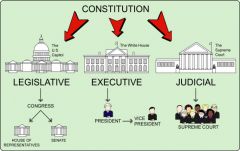
|
|
|
Individual Rights |
refer to the liberties of each individual to pursue life and goals without interference from other individuals or the government. Examples of individual rights include the right to life, liberty and the pursuit of happiness as stated in the United States Declaration of Independence. |
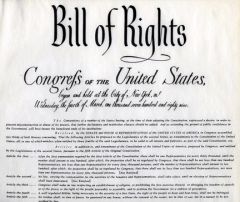
|
|
|
The Preamble |
The Preamble to the United States Constitution is a brief introductory statement of the Constitution's fundamental purposes and guiding principles. It states in general terms, and courts have referred to it as reliable evidence of, the Founding Fathers' intentions regarding the Constitution's meaning and what they hoped the Constitution would achieve. |
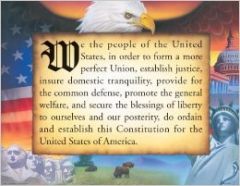
|
|
|
Declaration of Independence |
The Declaration of Independence is the statement adopted by the Continental Congress meeting at Philadelphia, Pennsylvaniaon July 4, 1776, which announced that the thirteen American colonies,[2] then at war with Great Britain, regarded themselves as thirteen newly independent sovereign states, and no longer a part of the British Empire. Instead they formed a new nation—theUnited States of America. John Adams was a leader in pushing for independence, which was unanimously approved on July 2. Acommittee of five had already drafted the formal declaration, to be ready when Congress voted on independence. The term "Declaration of Independence" is not used in the document itself. |

|
|
|
The Constitution |
We the People of the United States, in Order to form a more perfect Union, establish Justice, insure domestic Tranquility, provide for the common defense, promote the general Welfare, and secure the Blessings of Liberty to ourselves and our Posterity, do ordain and establish this Constitution for the United States of America. |

|

